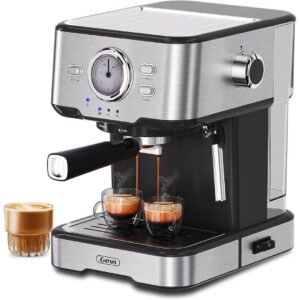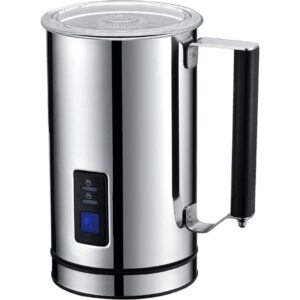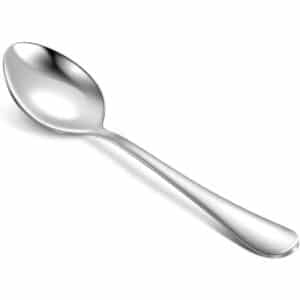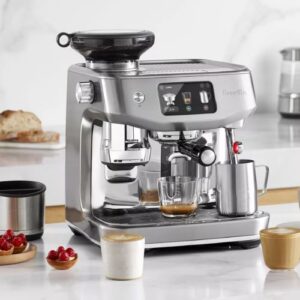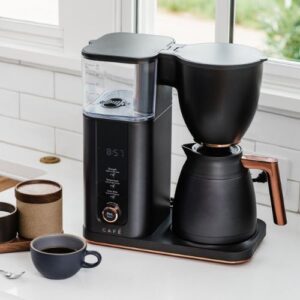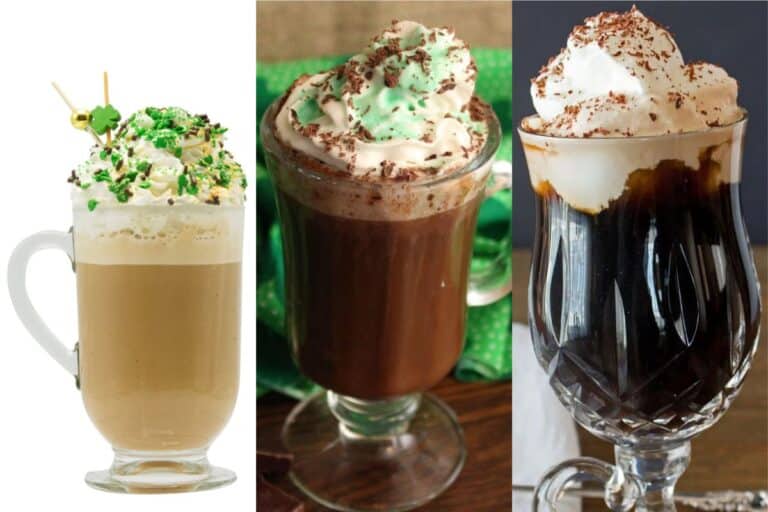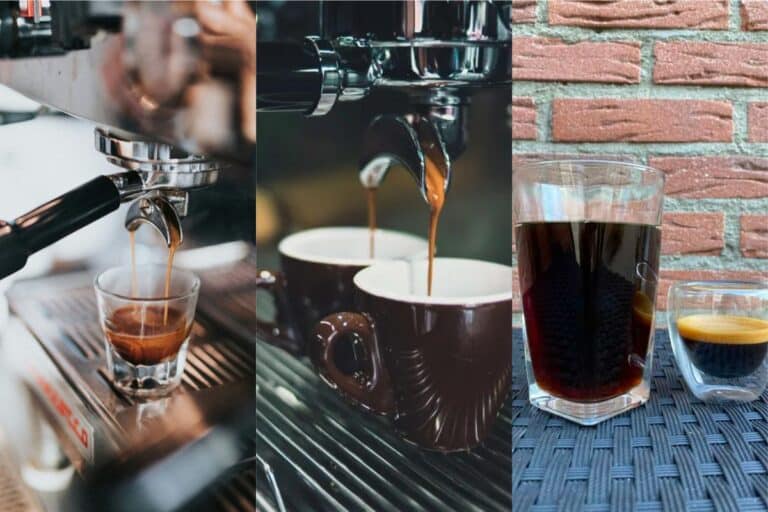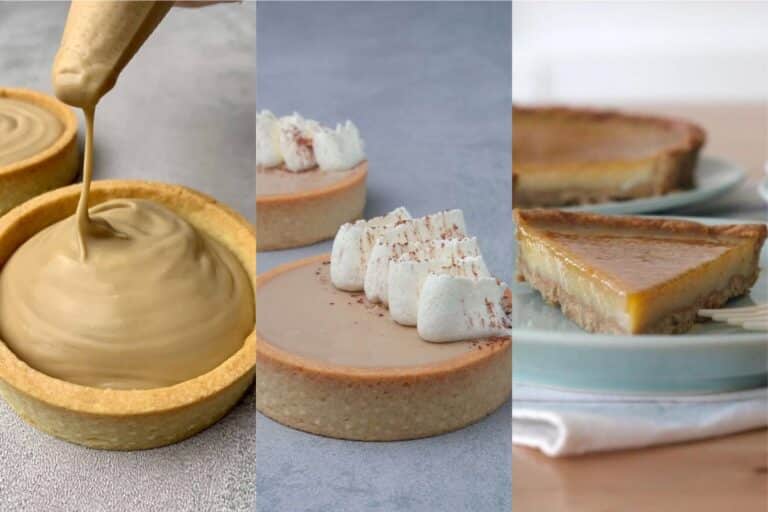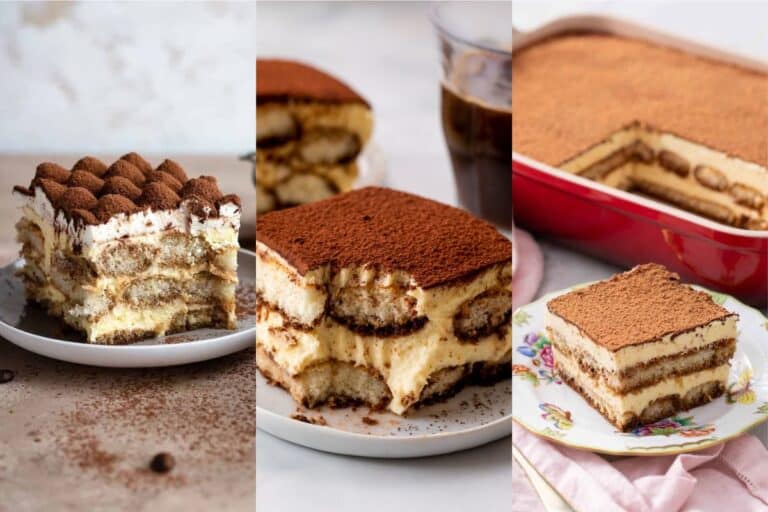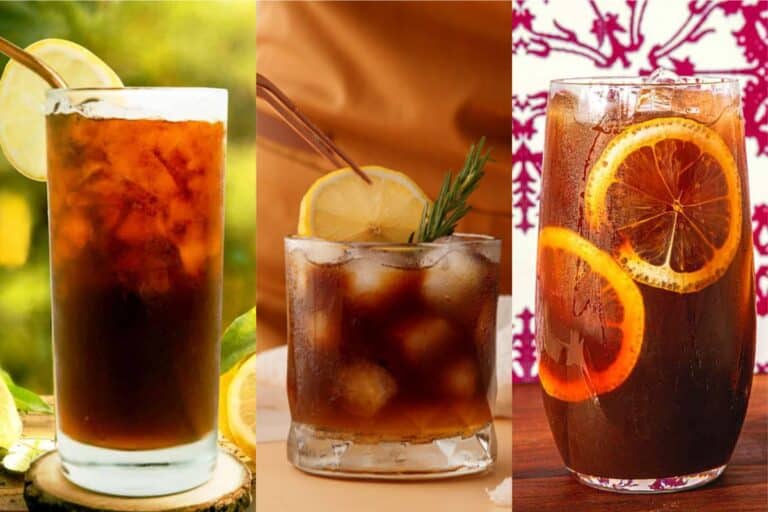The classic latte is a beloved coffeehouse favorite known for its creamy texture and rich flavor. Popular and versatile, this espresso-based drink is enjoyed by coffee enthusiasts worldwide. Despite its sophisticated taste, making a latte at home is surprisingly simple. With just a few basic ingredients and some easy-to-follow steps, you can create a café-quality latte in your own kitchen.
What is a Classic Latte?
A classic latte, also known as a caffè latte, is a popular espresso-based drink that combines rich espresso with creamy steamed milk. The term “latte” is derived from the Italian word for milk, highlighting the drink’s main ingredient.
Key Components:
- Espresso: A strong, concentrated coffee brewed by forcing hot water through finely-ground coffee beans.
- Steamed Milk: Milk that has been heated with steam to create a creamy texture and slight froth.
Difference Between a Latte and Other Espresso-Based Drinks:
- Latte vs. Cappuccino: While both drinks contain espresso and steamed milk, a cappuccino has equal parts espresso, steamed milk, and milk froth, resulting in a foamier texture.
- Latte vs. Flat White: A flat white has a higher ratio of espresso to milk, providing a stronger coffee flavor with a velvety microfoam.
- Latte vs. Macchiato: A macchiato is made with a shot of espresso “stained” with just a small amount of milk or milk foam, offering a bolder taste.
What Milk to Use for a Latte
Choosing the right milk is essential for creating a delicious and creamy latte. Here are some options:
Whole Milk
- Texture and Taste: Whole milk is the most common choice for lattes due to its rich, creamy texture and natural sweetness.
- Frothing: It froths well, creating a dense and velvety microfoam that complements the espresso.
2% Milk
- Texture and Taste: Slightly less creamy than whole milk but still provides a good balance of flavor and texture.
- Frothing: Froths reasonably well, though the foam may be a bit lighter and less dense.
Skim Milk
- Texture and Taste: Skim milk is the least creamy and has a more watery texture, but it is a low-calorie option.
- Frothing: It froths well, producing a light and airy foam, but lacks the richness of higher-fat milk.
Plant-Based Milks
- Almond Milk
- Texture and Taste: Light and nutty flavor, thinner consistency.
- Frothing: Can be challenging to froth; tends to produce larger bubbles.
- Soy Milk
- Texture and Taste: Creamier texture with a slightly sweet and nutty flavor.
- Frothing: Froths well, creating a foam similar to dairy milk.
- Oat Milk
- Texture and Taste: Thick and creamy with a subtle oat flavor.
- Frothing: Excellent for frothing; produces a dense and smooth foam, making it a popular dairy-free alternative.
- Coconut Milk
- Texture and Taste: Rich and creamy with a distinct coconut flavor.
- Frothing: Froths reasonably well, though the foam can be a bit less stable.
Tips for Frothing Plant-Based Milks
- Temperature: Heat the milk to the same temperature as dairy milk (150-155°F or 65-68°C) for the best results.
- Freshness: Use fresh, high-quality milk for better frothing.
- Barista Blends: Some brands offer barista versions of plant-based milks that are specially formulated to froth better and create a more stable foam.
How to Make a Classic Latte
1
servings10
minutes120
kcalThis classic latte combines the robust flavor of freshly brewed espresso with the silky texture of steamed milk. The drink is finished with a light layer of froth, creating a perfect balance of strong coffee and creamy milk. Each sip offers a harmonious blend of boldness and smoothness, making it a delightful treat for any time of day.
Ingredients
1 shot of espresso (or 1/3 cup strong brewed coffee)
1 cup milk (whole, skim, or plant-based)
Sweetener (optional, to taste)
Directions
- Brew a shot of espresso using an espresso machine or strong brewed coffee using a coffee maker.
- Pour the milk into the milk frother. Turn on the milk frother and heat the milk until it’s hot and frothy.
- Pour the espresso into a mug. Slowly add the steamed milk, holding back the froth with a spoon. Top the drink with the remaining froth.
- Add sweetener if desired, stirring gently to combine.
Equipment
Espresso Machine
Milk Frother
Spoon
Mug
Notes
- For the best flavor, use freshly ground coffee beans: Freshly ground beans ensure a richer and more aromatic espresso.
- Experiment with different types of milk: Whole milk, skim milk, and plant-based alternatives (like almond, oat, or soy) each offer unique tastes and textures. Try different options to find your favorite.
- Practice your frothing technique: Achieving the perfect microfoam takes practice. Aim for small, fine bubbles for a silky smooth texture.
- Add flavor syrups or spices: Personalize your latte by adding vanilla syrup, cinnamon, or other flavorings. These additions can enhance the overall taste and provide a unique twist to the classic recipe.
Nutrition Facts
- Calories: 120kcal
- Fat: 4g
- Carbohydrates: 12g
- Protein: 8g
Conclusion
Give making a classic latte at home a try and experience the joy of crafting a coffee shop favorite in your own kitchen. With a few basic ingredients and some practice, you can create a delicious latte that rivals any café. Enjoy the rich, creamy texture and the satisfaction of your homemade creation. Pair your latte with a fresh pastry for a delightful treat that will elevate your coffee experience to the next level.
Frequently Asked Questions
- Can I make a latte without an espresso machine?
- Answer: Yes, you can make a latte without an espresso machine by using a stovetop espresso maker (Moka pot) or a strong brewed coffee from an Aeropress or French press. For frothing milk, you can use a handheld milk frother, a whisk, or even shake the milk vigorously in a jar before heating it in the microwave.
- What is the best type of milk for a latte?
- Answer: Whole milk is typically the best choice for a latte due to its creamy texture and natural sweetness. However, you can use any milk or milk alternative based on your dietary preferences and taste. Oat milk is a popular dairy-free option as it froths well and has a creamy consistency.
- How do I achieve the perfect milk froth?
- Answer: To achieve perfect milk froth, start with cold milk and a clean steam wand. Position the steam wand just below the surface of the milk and slowly lower the pitcher as the milk expands. Aim for a temperature of 150-155°F (65-68°C) to avoid overheating. Practice and patience are key to mastering the technique.
- Can I add flavor to my latte?
- Answer: Absolutely! You can add flavored syrups like vanilla, caramel, hazelnut, or peppermint to your latte. Simply add the syrup to the espresso before pouring in the steamed milk to ensure an even blend. You can also sprinkle spices like cinnamon or cocoa powder on top for extra flavor.
- What’s the difference between a latte and a cappuccino?
- Answer: The main difference between a latte and a cappuccino is the ratio of milk to foam. A latte consists of a shot of espresso with a larger amount of steamed milk and a small layer of milk froth on top. A cappuccino has equal parts espresso, steamed milk, and milk froth, resulting in a foamier texture and a stronger coffee flavor.

